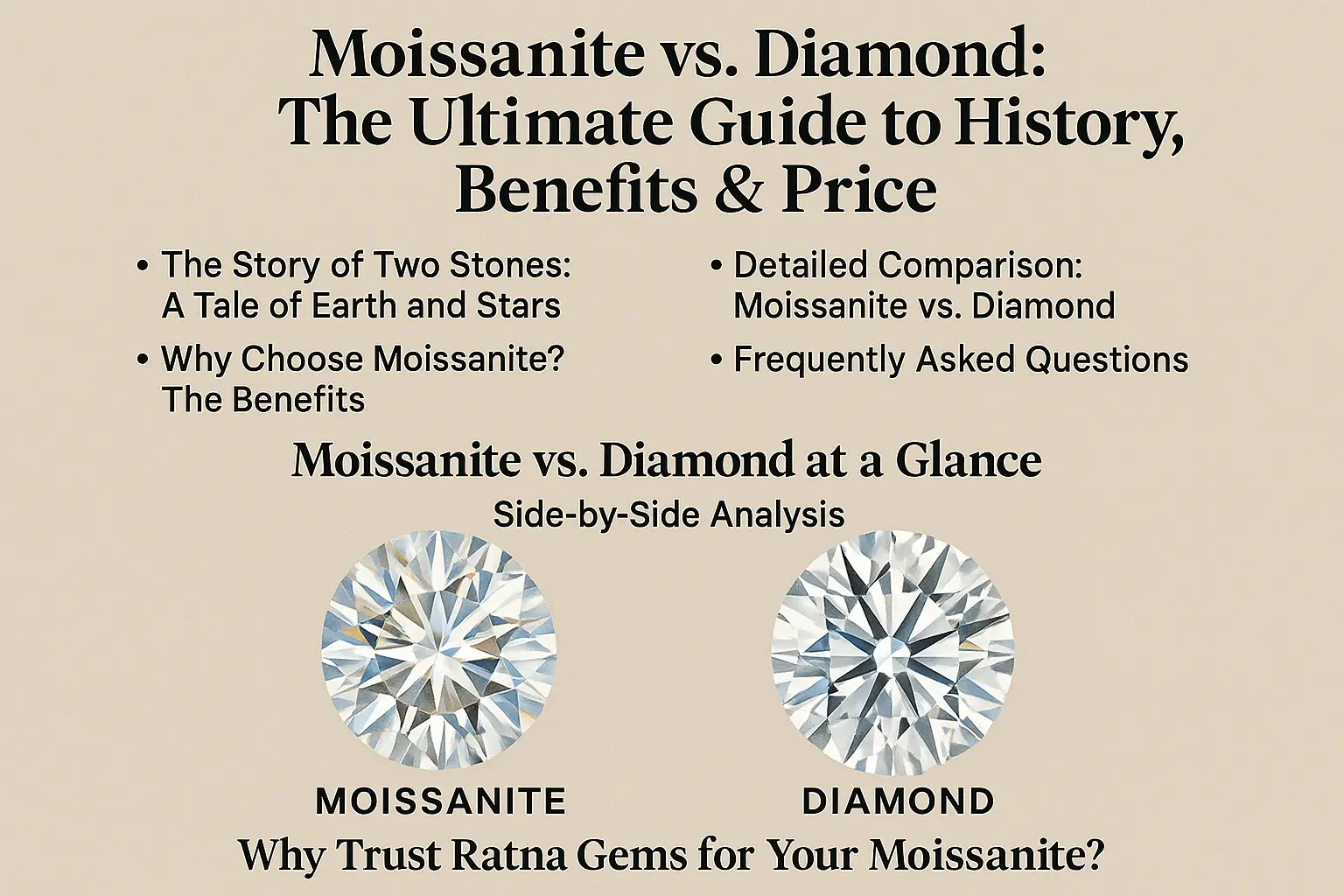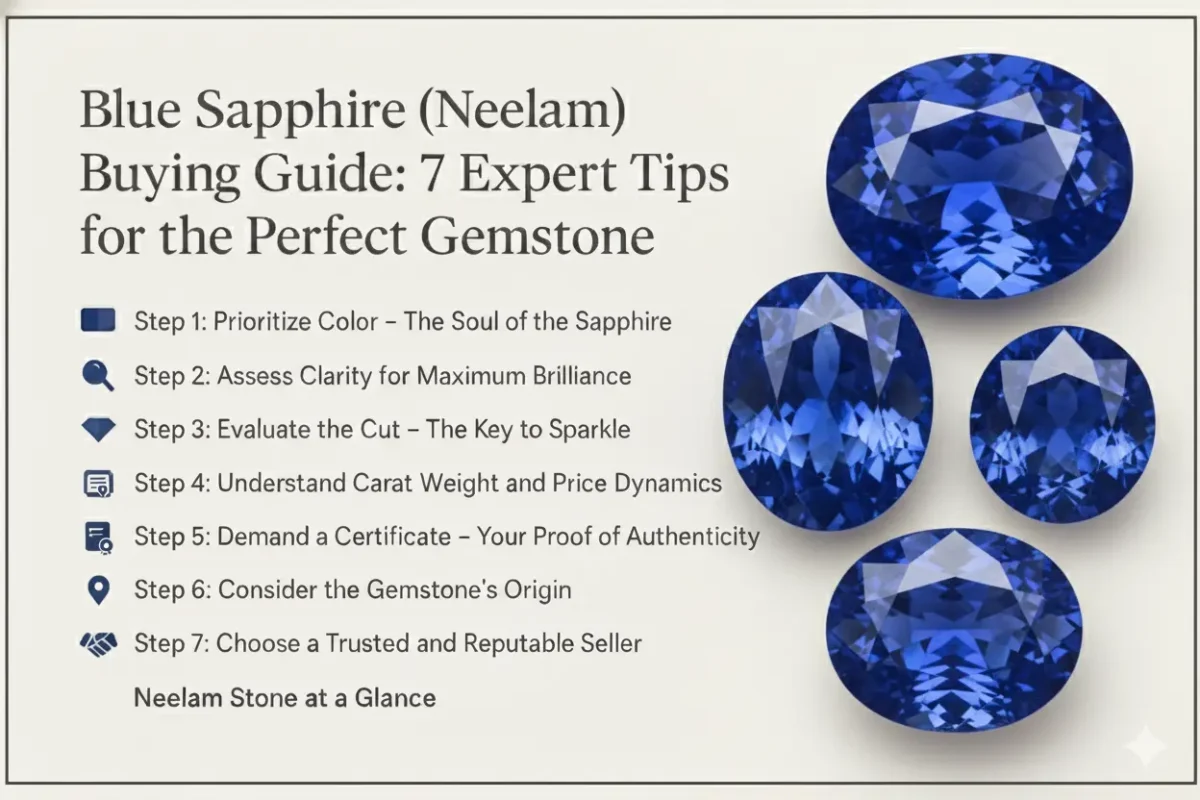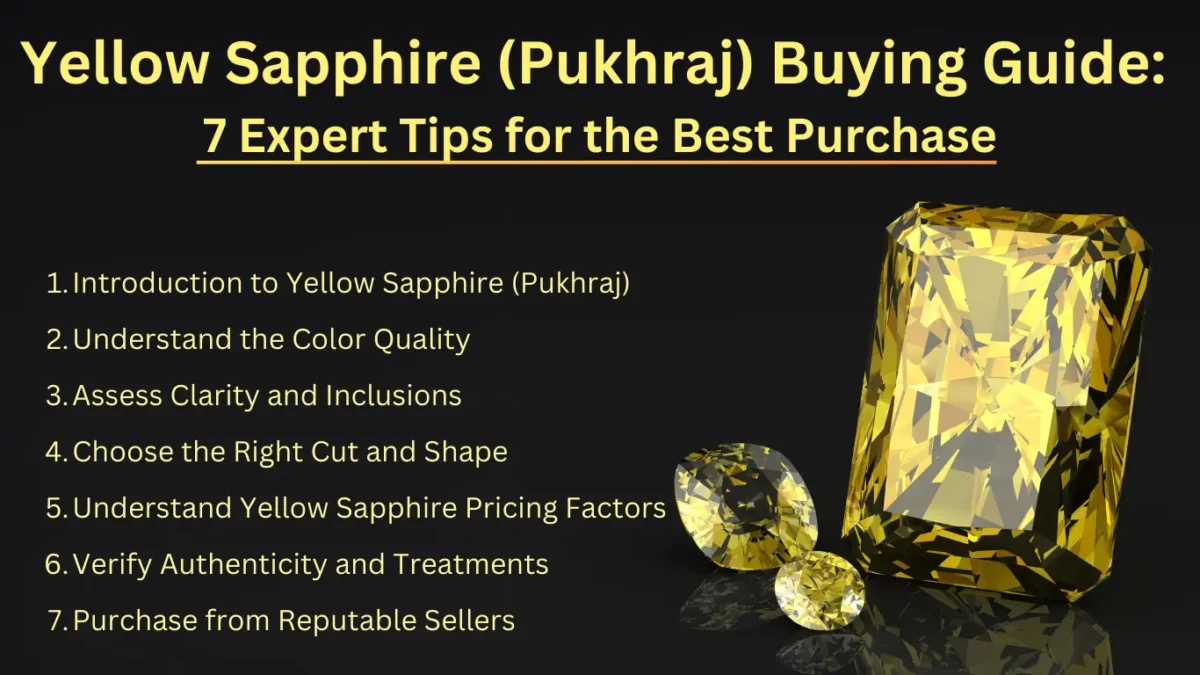Moissanite vs. Diamond: The Ultimate Guide to History, Benefits & Price
When choosing the perfect gemstone for a special piece of jewelry, the debate between Moissanite vs. Diamond is more relevant than ever. One is a timeless symbol of luxury, born deep within the earth; the other is a dazzling, ethical marvel born from the stars. This expert guide provides an in-depth comparison of their history, characteristics, and price, helping you make an informed and confident decision that aligns with your values and budget.

Moissanite vs. Diamond at a Glance
| Composition | Silicon Carbide (SiC) | Carbon (C) |
| Origin | Lab-created (Natural is meteoric and rare) | Mined from the Earth |
| Hardness (Mohs) | 9.25 (Excellent durability) | 10 (The hardest natural mineral) |
| Brilliance (Fire) | Higher refractive index, more rainbow flashes | Classic white light sparkle |
| Price | Significantly more affordable per carat | Premium price, especially for high quality |
The Story of Two Stones: A Tale of Earth and Stars
- Natural Diamond: Formed over billions of years under immense heat and pressure deep within the Earth’s mantle, diamonds are the ultimate symbol of endurance and luxury. Their history is intertwined with royalty, romance, and human desire.
- Moissanite: First discovered in 1893 by Nobel Prize-winning chemist Dr. Henri Moissan in a meteorite crater, moissanite is literally a gemstone born from the stars. Because natural moissanite is incredibly rare, the stones sold today are lab-created, perfectly replicating the composition of this celestial mineral.
Detailed Comparison: Moissanite vs. Diamond
While they may look similar at first glance, these two gemstones have distinct characteristics.
Side-by-Side Analysis
| Characteristic | Moissanite | Natural Diamond |
|---|---|---|
| Brilliance & Fire | Higher refractive index (2.65-2.69) creates a brilliant, fiery sparkle with intense rainbow flashes. | Refractive index of 2.42 provides a beautiful balance of white light (brilliance) and rainbow flashes (fire). |
| Durability | With a hardness of 9.25, it is the second-hardest gemstone used in jewelry and is exceptionally durable for daily wear. | The hardest known natural substance (10 on the Mohs scale), making it the most durable gemstone. |
| Price | Offers a significant cost saving. A moissanite can be up to 90% less expensive than a natural diamond of comparable size and quality. | Commands a premium price that increases exponentially with carat weight and quality grades. |
| Ethical Sourcing | As a lab-created stone, it is 100% conflict-free and has a minimal environmental impact. | While the industry has made strides with standards like the Kimberley Process, concerns about “blood diamonds” and the environmental impact of mining remain. |
Why Choose Moissanite? The Benefits
The rising popularity of Moissanite is driven by a combination of factors that appeal to the modern buyer.
- Exceptional Value: You can get a much larger and higher-quality stone for your budget without sacrificing beauty or durability. The moissanite diamond price in India makes it an incredibly attractive option.
- Ethical Peace of Mind: For those concerned with sustainability and ethical practices, moissanite is the clear choice.
- Dazzling Brilliance: If you love a fiery, rainbow sparkle, moissanite’s brilliance is unmatched.
Why Trust Ratna Gems™ for Your Moissanite?
At Ratna Gems™, we are committed to providing authentic, high-quality gemstones with complete transparency. We are your trusted source because we offer:
- Top-Grade Moissanite: We offer only high-quality, certified Moissanite stones known for their exceptional cut, color, and clarity.
- Transparent and Honest Pricing: We offer competitive prices for genuine Moissanite with full disclosure on its characteristics.
- Unmatched Customer Support: Our experts are here to guide you, and our 7-day return policy ensures your complete satisfaction.
Frequently Asked Questions
Will Moissanite get cloudy over time?
No. Unlike cubic zirconia, Moissanite is not a porous material and will not become cloudy or lose its brilliance over time. It is a very stable gemstone that will maintain its sparkle for a lifetime with proper care.
Can Moissanite pass a diamond tester?
Yes, most basic diamond testers that work by testing thermal conductivity will incorrectly identify Moissanite as a diamond. This is because both stones are very effective at dispersing heat. More advanced testers that check for electrical conductivity can distinguish between the two.
Is Moissanite considered a “fake” diamond?
No. Moissanite is not a “fake” diamond; it is a unique and beautiful gemstone in its own right, with its own distinct chemical composition (Silicon Carbide). It is a diamond simulant, meaning it looks similar, but it is not trying to be a diamond.
How should I care for my Moissanite jewelry?
Care for Moissanite is similar to caring for a diamond. Clean it with warm, soapy water and a soft brush. Due to its high durability, it is resistant to scratching and is safe for ultrasonic cleaners.






Leave a Comment
You must be logged in to post a comment.